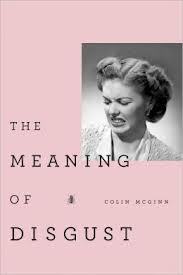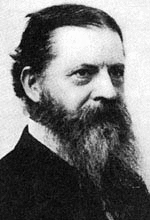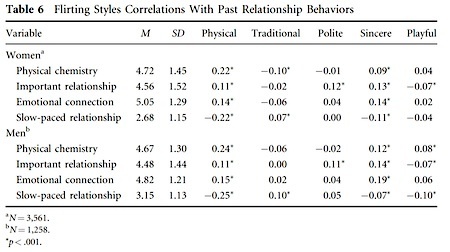Marc Abrahams's Blog, page 481
July 2, 2013
The day engineers ceased to be boring (in Britain)
In August 1996, British civil engineers ceased to be officially boring.
Glenda Browne, prompted by the appearance of the special Boring Machines issue the Annals of Improbable Research, alerts us to a report about that historic occasion. The AP wire service reported, in 1996:
CIVIL ENGINEERS NO LONGER BORING — YELLOW PAGES SAYS SO
DIRK BEVERIDGE , Associated Press Aug. 22, 1996 3:48 PM ET
LONDON (AP) — Civil engineers have convinced the London Yellow Pages they aren’t boring anymore.
For decades, anybody who needed a hole bored could have found a somewhat insulting listing. “Boring: see civil engineers.” This prompted many jokes, or rather the same joke, over and over. The Institution of Civil Engineers finally stopped laughing and — bolstered by the 1990s climate of political correctness — lobbied for a new directory listing.
“It’s by no means that we have no sense of humor, but after all these years, the story got a bit boring,” deputy secretary John Whitwell said. The engineers quickly found light at the end of their tunnel. The printers of the Yellow Pages caved in and agreed that future listings will say “Boring: See sites exploration.” The breakthrough was reported Thursday in the weekly trade journal New Civil Engineer under the headline ”Boring engineers walk into history.”
BONUS: Glenda Browne, who brought this to our attention, is sometimes known as The The Woman. Browne was awarded the 2007 Ig Nobel Prize for literature, for her study of the word “the” — and of the many ways it causes problems for anyone who tries to put things into alphabetical order. [REFERENCE: "The Definite Article: Acknowledging 'The' in Index Entries," Glenda Browne, The Indexer, vol. 22, no. 3 April 2001, pp. 119-22.]
BONUS: “Please stop. I’m bored.”

July 1, 2013
Development of the Flirting Styles Inventory
How, you may wonder, did the Flirting Styles Inventory come to be developed. This paper attempts to answer your question:
“Individual Differences in the Communication of Romantic Interest: Development of the Flirting Styles Inventory,” Jeffrey A. Hall, Steve Carter, Michael J. Cody and Julie M. Albright [pictured here], Communication Quarterly, vol. 58, no. 4, 2010, pp. 365-93. The authors, at University of Kansas, eHarmony, and the University of Southern California, explain:
“Relationship initiation research supports the existence of 5 styles of communicating romantic interest in others: traditional, physical, sincere, playful, and polite. Exploratory and confirmatory factor analyses on a large adult sample (N = 5,020) supported the existence of the styles. Styles predictably corresponded with self-monitoring and a 5-factor personality model. Women scored higher on all styles, except the playful style. Predictive validity was demonstrated by correlating styles to courtship initiation behaviors and past relationship experiences. The physical, sincere, and playful styles correlated with more dating success. The physical and sincere styles correlated with rapid relational escalation of important relationships with more emotional connection and greater physical chemistry.”
Here is detail from the study:
Want to take inventory of the Flirting Styles Inventory? Go ahead: “Welcome to the University of Kansas Flirting Styles Inventory!”
(Thanks to investigator Neil Martin for bringing this to our attention.)

Disgust With ‘Disgust’, And Where’s McGinn?
 Disgust gets a roller-coaster ride in a soon-to-be-published study (which you can download a full copy of now!). The study is:
Disgust gets a roller-coaster ride in a soon-to-be-published study (which you can download a full copy of now!). The study is:
“The Meaning of Disgust: A Refutation,” Nina Strohminger, Emotion Review, in press 2013.
The author, at Kenan Institute for Ethics, Duke University, begins the paper with this sentence:
“In disgust research, there is shit, and then there is bullshit. McGinn’s (2011) theory belongs to the latter category.”
Strominger’s disgusted-with-’disgust’ study is a reaction to this book:
The Meaning of Disgust, Colin McGinn, Oxford, UK: Oxford University Press, 2011.
The book’s author, Colin McGinn, is based at the University of Miami. Or was. See the reports: “Prominent Philosopher to Leave U. of Miami Amid Misconduct Allegations” and “McGinn Leaving Miami Due To Improper Emails“.
(Thanks to investigator Neil Martin for suppressing whatever kinds of disgust he may feel at one or another aspect of this story, and bringing it to our attention.)
BONUS: Colin McGinn’s blog

How To: Smartphone Assessment of Penile Deformity
Another example of researchers bending new technology to meet their desires:
“Validity and Reliability of a Smartphone Application for the Assessment of Penile Deformity in Peyronie’s Disease,” Ryan S. Hsi, James M. Hotaling, Andrea L. Hartzler, Sarah K. Holt, Thomas J. Walsh, Journal of Sexual Medicine, epub April 3, 2013. The authors, at the University of Washington, reveal their method:
“To assess penile curvature, 15 single cylinders of malleable penile prostheses were molded to varying curvature angles. Three blinded observers nonsequentially measured the angle of curvature for each prosthetic cylinder using a protractor, goniometer, and UWPEN [the University of Washington Peyronie's Examination Network]. To assess girth narrowing, six clay models of the penile shaft were constructed to represent conditions of normal, partial hourglass, circumferential hourglass, and pencil narrowing. Girth was measured using a ruler and UWPEN by the same blinded observers.”
(Thanks to investigator Ivan Oransky for bringing this to our attention.)

Samuel Beckett meets the Teletubbies
Was the creation of the Teletubbies (1997) inspired by the work of Nobel Prize winning avant-garde novelist, playwright, theatre director, and poet, Samuel Beckett? Specifically, his plays Quad I + II ? (1981)
Univ.-Prof. Dr. Eckart Voigts-Virchow of the University of Siegen, Germany,
draws attention to possible similarities (and possible differences) in his paper for Samuel Beckett: Endlessness in the Year 2000. Beckett Aujourd’hui/Today 11. Amsterdam/New York: Rodopi, 2001. pp. 210-218
“Whereas the hooded figures of Quad exemplify Beckett’s strategy of consecutive excorporation – the intellectual denial of bodily representation, a purge of human semblance and human interaction – the Teletubbies suggest elementary and technologized group bodies. If one brackets reference, one may watch both the Teletubbies and the hooded Quad figures in ‘aisthetic’ terms as electronic presences in anarchic rhythms. Repetition and heteronomy govern both works, as the colour figures are wholly dependent on either a mysterious direction expressed in a mathematically permutated, automatic course, avoiding a dangerous centre (Quad), or the fantasy of an enigmatic technological adult regime (Teletubbies).”
see : QUAD I AND TELETUBBIES or: ‘Aisthetic’ Panopticism versus Reading Beckett [click PDF button for full version]
NOTE: ‘Aísthetic’ is not a typo. In this context, the professor prefers to use the original spelling from 1750, as coined by the German philosopher Alexander Gottlieb Baumgarten, rather than the more usual ‘aesthetic’.
BONUS: There are many (possibly unlicenced) ‘mash-up’ remixes of the Teletubbies on Youtube. Sadly, as documented by Youtomb at MIT, the Teleubbies performing Purple Haze by Jimi Hendrix is no longer available. Instead, here they are with Rammstein . . .

June 29, 2013
How kids should avoid colds, 1947-style [video]
“George jumps right into trouble, because he forgot his galoshes.” That’s just one insight from this 1947 American instructional video about “How young children must behave to avoid transmitting germs to one another.” At the end, “they learn that Dutch people are clean.”


Slimy Hairs in A Sensor from Andy
Yet another new paper from the prodigiously productive Andy Adamatzky:
“Slimy Hairs: Hair Sensors Made With Slime Mould,” Andrew Adamatzky, arXiv:1306.2935, June 13, 2013. The paper explains:
“Slime mould Physarum polycephalum is a large single cell visible by unaided eye. We design a slime mould implementation of a tactile hair, where the slime mould responds to repeated deflection of hair by an immediate high-amplitude spike and a prolonged increase in amplitude and width of its oscillation impulses. We demonstrate that signal-to-noise ratio of the Physarum tactile hair sensor averages near 6 for the immediate response and 2 for the prolonged response.”


June 28, 2013
mini-AIR June issue: squirmers, squirmers, squirmers
 The June issue of mini-AIR (our monthly newsletter — it’s a wee little supplement to the magazine) just went out. You can read it online, too. Topics include:
The June issue of mini-AIR (our monthly newsletter — it’s a wee little supplement to the magazine) just went out. You can read it online, too. Topics include:
Unsteady Squirmers
Steady Squirmers
Pottos: empty niche
and more
It also has info about upcoming events.
Mel [pictured here] says, “It’s swell.”
mini-AIR is the simplest way to keep informed about Improbable and Ig Nobel news and events. Just add yourself to the mini-AIR list, and mini-AIR will be emailed to you every month.

2nd 24/7 Battle in Leiden: the young and wise
 On July 7th, 2013, in Museum Boerhaave, Leiden, The Netherlands, six young, prominent scientists from Leiden University will present their field of research by giving a complete technical description, in Dutch, in twenty-four (24) seconds, followed by a clear summary that anyone can understand, in seven (7) Dutch words. The best of these 24/7 speakers will be invited to present a 24/7 Lecture at the Nederlandse Ig Nobel Night, September 14th, 2013.
On July 7th, 2013, in Museum Boerhaave, Leiden, The Netherlands, six young, prominent scientists from Leiden University will present their field of research by giving a complete technical description, in Dutch, in twenty-four (24) seconds, followed by a clear summary that anyone can understand, in seven (7) Dutch words. The best of these 24/7 speakers will be invited to present a 24/7 Lecture at the Nederlandse Ig Nobel Night, September 14th, 2013.
This is the second semi-final. The first battle was won by Menno Schilthuizen.
The new contestants of the Ig Nobel 24/7 Battle (and their topics) are:
Max van Duijn (topic: Gedachtenlezen)
Floris Keehnen (topic: Caribische indianen)
Tim van Kempen (topic: Stervorming in clusters)
Ivo Labbé (topic: De vroege kosmos)
Marrigje Rikken [pictured here] (topic: Vroegmoderne diervoorstellingen)
Wessel Valkenburg (topic: Wij in ons heelal)
The time and word limits will be enforced by referee Maarten Keulemans, science editor of De Volkskrant.
This form of communication — the 24/7 Lectures — was invented at the Ig Nobel Prize ceremony, and has long been a featured part of that annual event. At the Leiden event, our European Bureau Chief (and winner of the 2003 Ig Nobel Prize for biology) Kees Moeliker will explain the history of the 24/7 Lectures and of the Ig Nobel Prizes.
Where & when: Museum Boerhaave, Lange St.Agnietenstraat 10, Leiden, the Netherlands; July 7th, 2013, Sunday, 2:00 pm.
Tickets: just the entrance fee to the museum (to reserve seats: fill in this form)

Ig Nobel winners on display in Hakodate July 1
Two of the most eloquent Ig Nobel Prize winners will give free public talks at Future University Hakodate, Japan, on July 1, starting at 6:30 pm:
Toshiyuki Nakagaki, winner of two Ig Nobel Prizes for his (and his colleagues’) various experiments with slime mold
Koji Tsukada, co-inventor of the SpeechJammer, a machine that disrupts a person’s speech, by making them hear their own spoken words at a very slight delay.
Join them!
 BONUS: The event has a Facebook page
BONUS: The event has a Facebook page

Marc Abrahams's Blog
- Marc Abrahams's profile
- 14 followers





